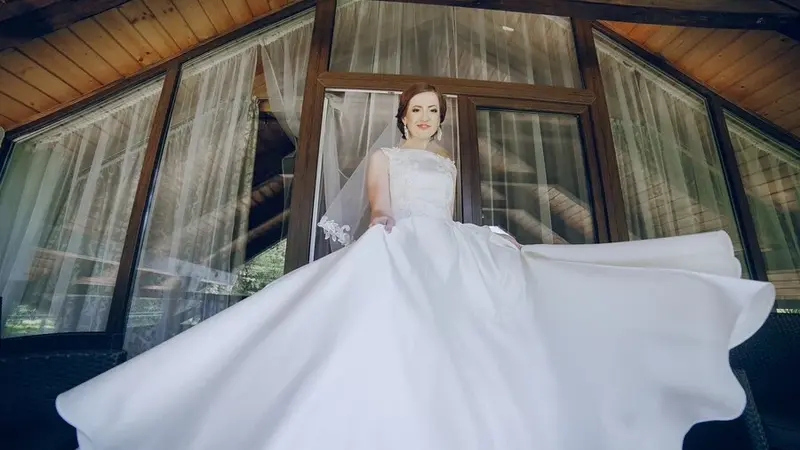Achieving the perfect fit in fashion can make all the difference. A gown, no matter how beautifully designed, shines only when it fits its wearer perfectly.
For modest wedding dresses, alterations are key to achieving style and comfort. Modest gowns, with higher necklines, long sleeves, and fuller skirts, need precise tailoring for a sophisticated fit.
Tailors adjust hemlines, sleeve lengths, and seams to match the bride’s body. Custom touches like lace overlays, beadwork, or illusion panels can enhance the design, adding grace and individuality.
Whether off-the-rack or custom-made, expert alterations ensure your modest wedding dress fits flawlessly for your special day.
This is where expert alterations come into play. For fashion enthusiasts and tailoring professionals alike, understanding the art and science of gown alterations can transform an ordinary piece into a masterpiece.
The Importance of Proper Fit
A gown that fits well not only enhances the wearer’s silhouette but also boosts their confidence. In an age where off-the-rack options are abundant, custom alterations ensure that every curve, line, and seam aligns perfectly with the individual’s body. This section will delve into why proper fitting is crucial and how it impacts the overall presentation of the garment.
Key Areas for Alterations
1. Bust Adjustments
Achieving a perfect bust fit requires precision. Whether it’s taking in or letting out seams, adding darts, or adjusting straps, the goal is to ensure the bodice sits snugly without any gaping or tightness. Expert tailors often use dress forms to closely monitor these adjustments, ensuring an impeccable outcome.
2. Waist and Hip Modifications
The waist and hips are critical areas where custom alterations can significantly enhance the garment’s fit. Dart manipulation, side seam adjustments, and adding or removing fabric panels are common techniques used to tailor this area to perfection. These modifications help in accentuating the wearer’s natural curves, providing a flattering silhouette.
3. Hemline Customization
The length of a gown can drastically affect its look. Whether opting for floor-length elegance or a chic tea-length, getting the hemline right is essential. Techniques such as blind stitching, rolled hems, and horsehair braid applications are utilized to achieve a seamless finish that complements the overall design.
4. Sleeve Adjustments
Sleeves can often be a tricky area to get right, especially with intricate designs. Adjusting sleeve length, width, and even the armhole can dramatically change the comfort and appearance of the garment. Tailors must consider factors such as fabric type and garment design to execute these adjustments flawlessly.
Techniques and Tools for Precision
1. Measuring and Marking
Accurate measurements are the foundation of any successful alteration. Using tools such as tape measures, sewing gauges, and tailor’s chalk ensures precise marking and cutting. It’s crucial to measure multiple times and mark subtly to avoid any permanent damage to the fabric.
2. Seam Ripping and Sewing
Understanding how to seamlessly rip stitches without damaging the fabric is an invaluable skill. High-quality seam rippers and sharp scissors are essential tools for this task. Once adjustments are made, utilizing different sewing techniques like hand stitching, machine sewing, and serging can provide a durable and professional finish.
3. Fitting Sessions
Multiple fitting sessions are often necessary to ensure the alterations are progressing as desired. During these sessions, the tailor can make final tweaks and adjustments, ensuring the garment fits perfectly. These sessions also provide an opportunity for the wearer to provide feedback and request any additional changes.
Common Challenges and Solutions
Altering delicate fabrics like silk or lace can be challenging. Tailors must handle such materials with care, often employing techniques like hand stitching and using fine needles to avoid damage. Additionally, dealing with complex designs and embellishments requires a high level of skill and attention to detail. Solutions include careful planning, precise measuring, and sometimes even reworking the design to maintain structural integrity.
Conclusion
Mastering the art of gown alterations can elevate any garment from ordinary to extraordinary. For fashion enthusiasts, understanding these techniques allows for a greater appreciation of tailored garments. For professionals, it’s about refining skills and offering clients the perfection they seek. Whether you’re altering your piece or doing it for someone else, the journey to the perfect fit is both an art and a science.
